1. Bowring MG, Holscher CM, Zhou S, Massie AB, Garonzik-Wang J, Kucirka LM, et al. Turn down for what? Patient outcomes associated with declining increased infectious risk kidneys. Am J Transplant. 2018; 18(3):617–624. PMID:
29116674.

2. Ison MG, Hager J, Blumberg E, Burdick J, Carney K, Cutler J, et al. Donor-derived disease transmission events in the United States: data reviewed by the OPTN/UNOS Disease Transmission Advisory Committee. Am J Transplant. 2009; 9(8):1929–1935. PMID:
19538493.

3. Caballero F, Lopez-Navidad A, Perea M, Cabrer C, Guirado L, Solà R. Successful liver and kidney transplantation from cadaveric donors with left-sided bacterial endocarditis. Am J Transplant. 2005; 5(4 Pt 1):781–787. PMID:
15760402.

4. Cohen J, Michowiz R, Ashkenazi T, Pitlik S, Singer P. Successful organ transplantation from donors with
Acinetobacter baumannii septic shock. Transplantation. 2006; 81(6):853–855. PMID:
16570007.
5. Goldberg E, Bishara J, Lev S, Singer P, Cohen J. Organ transplantation from a donor colonized with a multidrug-resistant organism: a case report. Transpl Infect Dis. 2012; 14(3):296–299. PMID:
22176504.

6. Ariza-Heredia EJ, Patel R, Blumberg EA, Walker RC, Lewis R, Evans J, et al. Outcomes of transplantation using organs from a donor infected with
Klebsiella pneumoniae carbapenemase (KPC)-producing
K. pneumoniae
. Transpl Infect Dis. 2012; 14(3):229–236. PMID:
22624726.
7. Wan Q, Liu H, Ye S, Ye Q. Confirmed transmission of bacterial or fungal infection to kidney transplant recipients from donated after cardiac death (DCD) donors in China: a single-center analysis. Med Sci Monit. 2017; 23:3770–3779. PMID:
28771455.

8. Ison MG, Nalesnik MA. An update on donor-derived disease transmission in organ transplantation. Am J Transplant. 2011; 11(6):1123–1130. PMID:
21443676.

9. Len O, Gavaldà J, Blanes M, Montejo M, San Juan R, Moreno A, et al. Donor infection and transmission to the recipient of a solid allograft. Am J Transplant. 2008; 8(11):2420–2425. PMID:
18925908.

10. Lumbreras C, Sanz F, González A, Pérez G, Ramos MJ, Aguado JM, et al. Clinical significance of donor-unrecognized bacteremia in the outcome of solid-organ transplant recipients. Clin Infect Dis. 2001; 33(5):722–726. PMID:
11477528.

11. Garzoni C, Ison MG. Uniform definitions for donor-derived infectious disease transmissions in solid organ transplantation. Transplantation. 2011; 92(12):1297–1300. PMID:
21996654.

12. Mallon DH, Summers DM, Bradley JA, Pettigrew GJ. Defining delayed graft function after renal transplantation: simplest is best. Transplantation. 2013; 96(10):885–889. PMID:
24056620.
13. Corman Dincer P, Tore Altun G, Birtan D, Arslantas R, Sarici Mert N, Özdemir I, et al. Incidence and risk factors for systemic infection in deceased donors. Transplant Proc. 2019; 51(7):2195–2197. PMID:
31378467.

14. Albano L, Bretagne S, Mamzer-Bruneel MF, Kacso I, Desnos-Ollivier M, Guerrini P, et al. Evidence that graft-site candidiasis after kidney transplantation is acquired during organ recovery: a multicenter study in France. Clin Infect Dis. 2009; 48(2):194–202. PMID:
19090753.

15. Wolfe CR, Ison MG. AST Infectious Diseases Community of Practice. Donor-derived infections: guidelines from the American Society of Transplantation Infectious Diseases Community of Practice. Clin Transplant. 2019; 33(9):e13547. PMID:
30903670.

16. Huaman MA, Vilchez V, Mei X, Davenport D, Gedaly R. Donor positive blood culture is associated with delayed graft function in kidney transplant recipients: a propensity score analysis of the UNOS database. Clin Transplant. 2016; 30(4):415–420. PMID:
26840885.

17. Freeman RB, Giatras I, Falagas ME, Supran S, O'Connor K, Bradley J, et al. Outcome of transplantation of organs procured from bacteremic donors. Transplantation. 1999; 68(8):1107–1111. PMID:
10551637.
18. González-Segura C, Pascual M, García Huete L, Cañizares R, Torras J, Corral L, et al. Donors with positive blood culture: could they transmit infections to the recipients? Transplant Proc. 2005; 37(9):3664–3666. PMID:
16386498.

19. Yuan X, Chen C, Zhou J, Han M, Wang X, Wang C, et al. Organ donation and transplantation from donors with systemic infection: a single-center experience. Transplant Proc. 2016; 48(7):2454–2457. PMID:
27742320.

20. Outerelo C, Gouveia R, Mateus A, Cruz P, Oliveira C, Ramos A. Infected donors in renal transplantation: expanding the donor pool. Transplant Proc. 2013; 45(3):1054–1056. PMID:
23622623.

21. Wendt JM, Kaul D, Limbago BM, Ramesh M, Cohle S, Denison AM, et al. Transmission of methicillin-resistant
Staphylococcus aureus infection through solid organ transplantation: confirmation via whole genome sequencing. Am J Transplant. 2014; 14(11):2633–2639. PMID:
25250717.
22. Kieslichova E, Protus M, Nemcova D, Uchytilova E. Single mutidrug resistant enterobacteriacae donor-derived infection in four solid organ transplant recipients: a case report. BMC Surg. 2019; 19(1):111. PMID:
31412850.

23. Kumar D, Cattral MS, Robicsek A, Gaudreau C, Humar A. Outbreak of pseudomonas aeruginosa by multiple organ transplantation from a common donor. Transplantation. 2003; 75(7):1053–1055. PMID:
12698099.
24. Kim SH, Ha YE, Youn JC, Park JS, Sung H, Kim MN, et al. Fatal scedosporiosis in multiple solid organ allografts transmitted from a nearly-drowned donor. Am J Transplant. 2015; 15(3):833–840. PMID:
25639881.

25. Mularoni A, Bertani A, Vizzini G, Gona F, Campanella M, Spada M, et al. Outcome of transplantation using organs from donors infected or colonized with carbapenem-resistant gram-negative bacteria. Am J Transplant. 2015; 15(10):2674–2682. PMID:
25981339.

26. Singh N, Huprikar S, Burdette SD, Morris MI, Blair JE, Wheat LJ, et al. Donor-derived fungal infections in organ transplant recipients: guidelines of the American Society of Transplantation, Infectious Diseases Community of Practice. Am J Transplant. 2012; 12(9):2414–2428. PMID:
22694672.

27. Farnon EC, Kokko KE, Budge PJ, Mbaeyi C, Lutterloh EC, Qvarnstrom Y, et al. Transmission of
Balamuthia mandrillaris by organ transplantation. Clin Infect Dis. 2016; 63(7):878–888. PMID:
27358357.
28. Baddley JW, Schain DC, Gupte AA, Lodhi SA, Kayler LK, Frade JP, et al. Transmission of cryptococcus neoformans by organ transplantation. Clin Infect Dis. 2011; 52(4):e94–e98. PMID:
21220771.

29. Yansouni CP, Dendukuri N, Liu G, Fernandez M, Frenette C, Paraskevas S, et al. Positive cultures of organ preservation fluid predict postoperative infections in solid organ transplantation recipients. Infect Control Hosp Epidemiol. 2012; 33(7):672–680. PMID:
22669228.

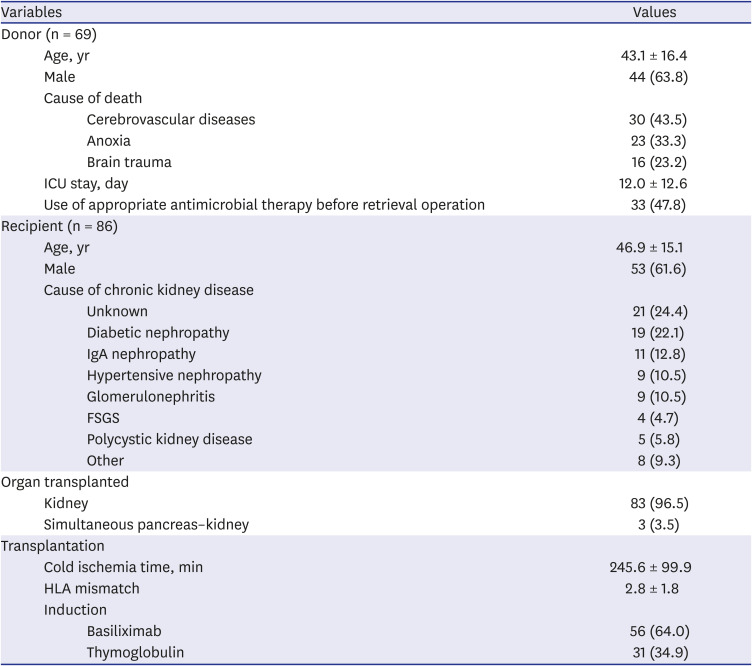
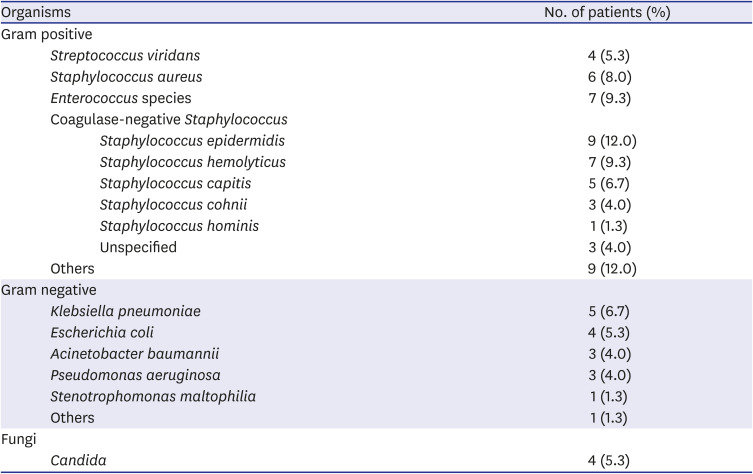
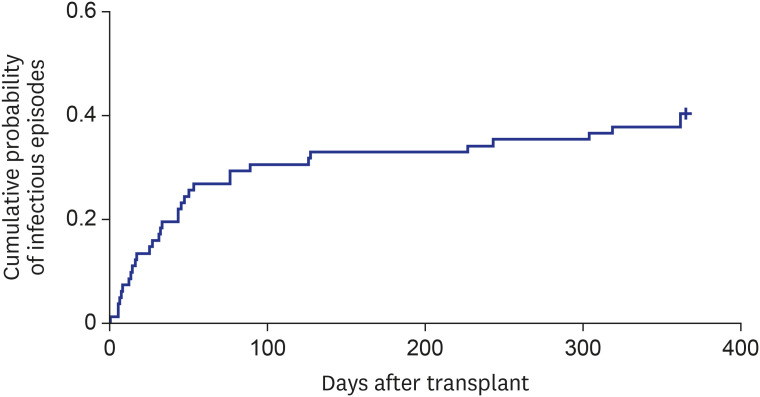


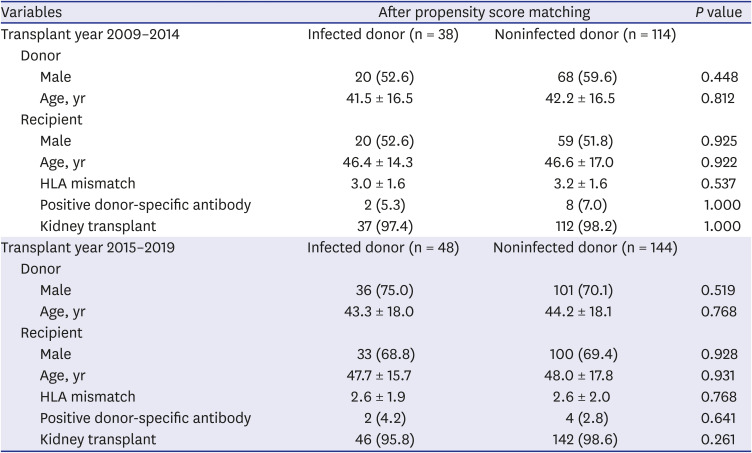





 PDF
PDF Citation
Citation Print
Print



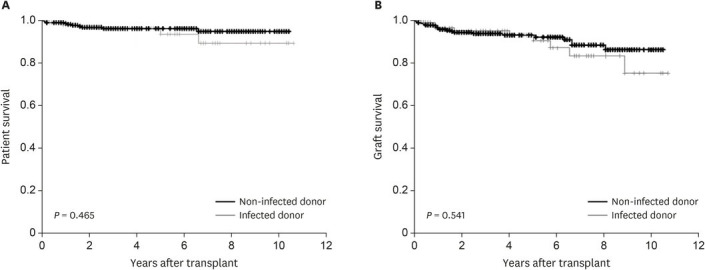
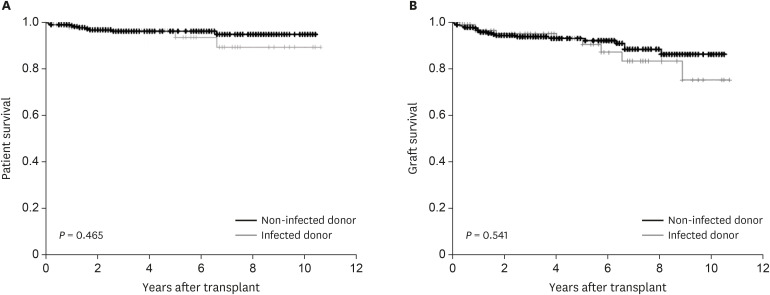
 XML Download
XML Download